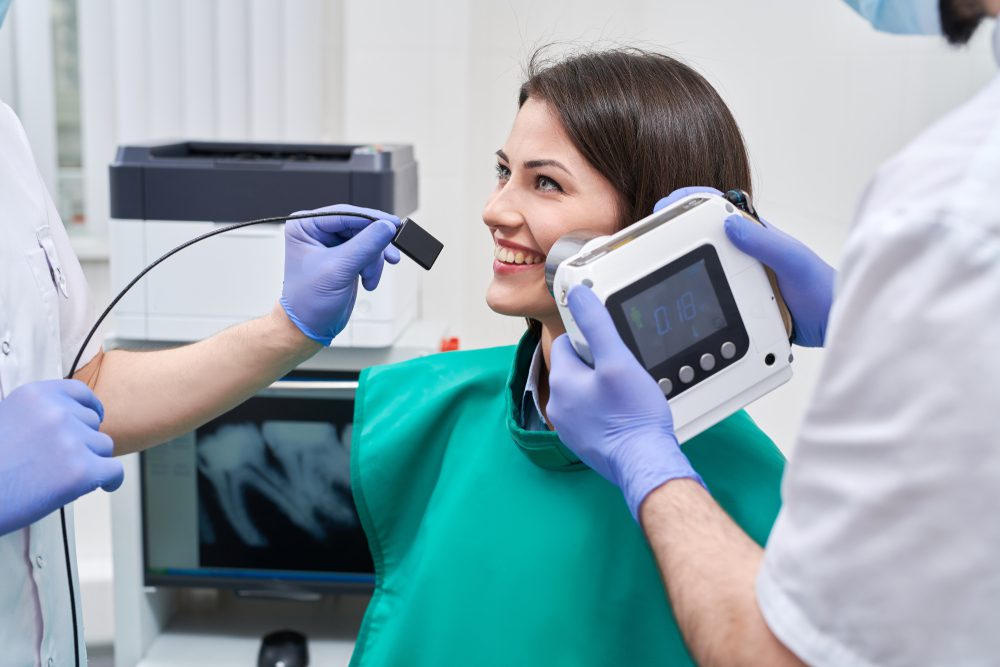
The wireless dental X-ray machine is revolutionizing the field of dental radiography by introducing unparalleled flexibility, efficiency, and patient comfort into dental diagnostics. As the healthcare sector continuously evolves towards more digital and patient-centered solutions, wireless technology in dental X-ray machines represents a significant leap forward. These devices harness the power of digital imaging and wireless connectivity to streamline the process of capturing and analyzing dental X-rays, making dental care more efficient and less intrusive for patients.
Introduction to Wireless Dental X-ray Machines
Wireless dental X-ray machines utilize digital radiography (DR) to capture images of a patient’s teeth and gums. Unlike traditional film-based X-rays or even tethered digital systems, these wireless devices transmit the captured images directly to a computer or cloud storage system via Wi-Fi or Bluetooth technology. This eliminates the need for physical connections between the X-ray sensor and the image processing unit, offering unprecedented flexibility in how and where dental professionals can perform diagnostic imaging.
Key Features and Benefits
1. Enhanced Image Quality: Wireless dental X-ray machines often provide superior image resolution compared to their film-based counterparts. The digital sensors used in these machines are highly sensitive, capturing detailed images that can be easily enlarged or enhanced for better diagnosis without losing clarity. This level of detail is crucial for identifying early stages of dental issues, such as cavities, root infections, and bone loss.
2. Immediate Image Availability: One of the most significant advantages of wireless dental X-ray systems is the instant availability of images. As soon as an image is captured, it can be viewed on a connected device, allowing for immediate assessment and diagnosis. This speed can significantly improve workflow efficiency in a busy dental practice, reducing patient wait times and allowing for faster treatment planning.
3. Reduced Radiation Exposure: Digital X-ray sensors require less radiation to produce an image than traditional film X-rays. When combined with the precision and control of wireless technology, dental professionals can minimize the exposure to radiation for their patients, adhering to the ALARA (As Low As Reasonably Achievable) principle in patient safety.
4. Mobility and Convenience: The absence of wires and the compact size of the digital sensors enhance mobility, making it easier to take X-rays in different settings, including clinics with limited space, mobile dental units, and during house calls for patients who cannot easily travel to a dental office.
5. Seamless Integration with Dental Practice Software: Wireless dental X-ray images can be directly integrated into a patient’s digital record, stored securely in the cloud or on local servers. This integration facilitates easy access to patient histories, comparison of images over time, and sharing of diagnostics with other dental professionals when referrals or consultations are necessary.
Challenges and Considerations
Despite the numerous benefits, wireless X-ray machines come with their own set of challenges. The initial investment cost can be high, and dental practices must ensure robust cybersecurity measures are in place to protect patient data during wireless transmission. Additionally, the reliance on wireless connectivity means that the quality of the network can impact the performance and reliability of the system.
Future Directions
The future of wireless dental X-ray technology is promising, with ongoing advancements aimed at further improving image quality, reducing device size, and extending battery life. Innovations such as artificial intelligence (AI) for automated image analysis and diagnosis are also on the horizon, which could significantly enhance the diagnostic capabilities of dental professionals.
Conclusion
The wireless dental X-ray machine is transforming dental diagnostics by providing a combination of high-quality imaging, patient safety, and operational efficiency. As technology continues to advance, these devices are set to become an indispensable tool in modern dental practices, offering a smoother, faster, and more comfortable experience for patients and dental professionals alike. The shift towards wireless dental radiography not only aligns with the broader trend of digitalization in healthcare but also underscores the dental industry’s commitment to leveraging technology to improve patient care.
Ready to elevate your dental practice with the latest in wireless dental X-ray technology? Great Lakes Imaging is here to guide you every step of the way. Don’t let outdated equipment hold you back—contact Great Lakes Imaging today and take the first step towards a more efficient, safe, and patient-friendly future.
